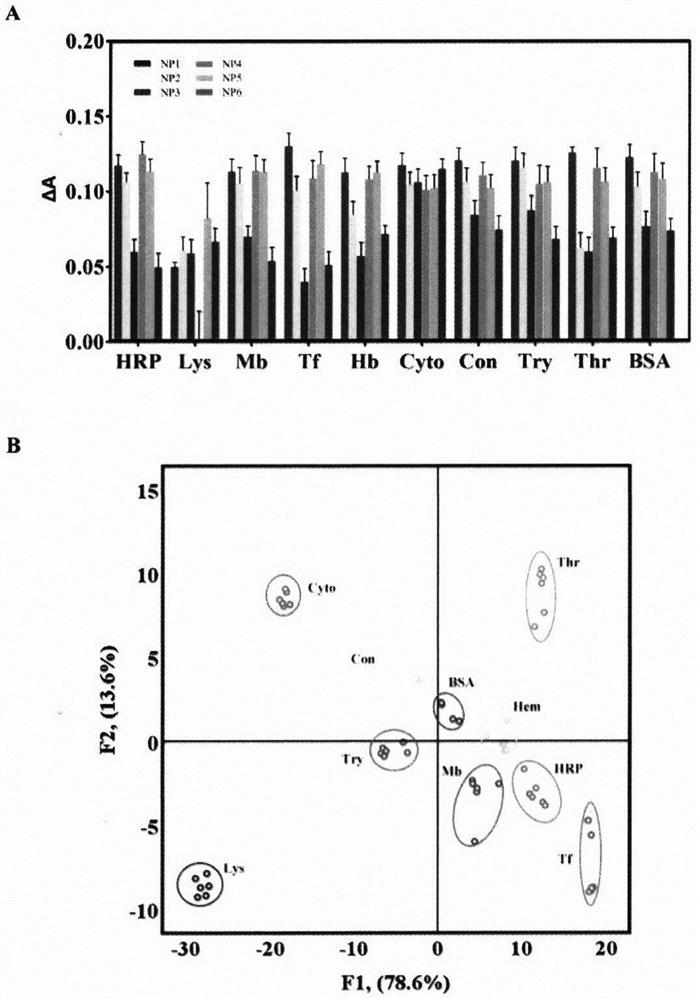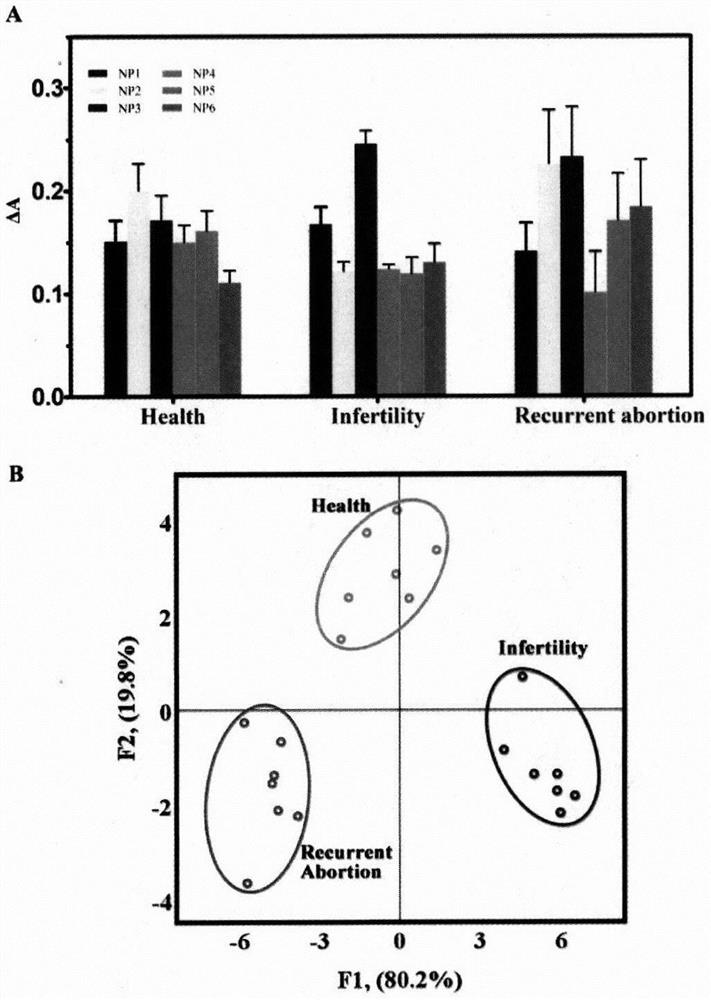Preparation method and application of a zirconium-based metal-organic framework colorimetric array sensor
An array sensor and organic framework technology, applied in the field of analytical chemistry, can solve the problem that the detection system cannot perform multiple analyzes at the same time, and achieve the effects of low production cost, stable reaction system, and easy operation
- Summary
- Abstract
- Description
- Claims
- Application Information
AI Technical Summary
Problems solved by technology
Method used
Image
Examples
Embodiment 1
[0038] Example 1: Detection of various proteins using a colorimetric array sensor that interacts with zirconium-based metal-organic frameworks and single-stranded DNA-modified gold nanoparticles
[0039] Step 1: Preparation of zirconium-based metal-organic framework: ZrCl 4 (120 mg), aminoterephthalic acid (110 mg) and benzoic acid (1.9 g) were dissolved in 10 mL of DMF and transferred to a Teflon liner. After ultrasonic treatment for 3 minutes, put it in 120°C and let it stand for 24 hours to react. The resulting product was obtained by centrifugation and washed repeatedly three times with fresh DMF and methanol (8000 rpm, 5 minutes). Finally, to remove the residual organic solvent, the nanoparticles were collected after drying overnight at 65 °C.
[0040]Step 1: Preparation of gold nanoparticles: When the chloroauric acid solution (50 mL, 1 mM) was heated to boiling, trisodium citrate solution (5 mL, 38.8 mM) was quickly added under vigorous stirring. Continue to heat the...
Embodiment 2
[0043] Example 2: Detection of a variety of semen samples using a colorimetric array sensor interacting with zirconium-based metal-organic frameworks and single-stranded DNA-modified gold nanoparticles
[0044] Step 1: Preparation of zirconium-based metal-organic framework: ZrCl 4 (120 mg), aminoterephthalic acid (110 mg) and benzoic acid (1.9 g) were dissolved in 10 mL of DMF and transferred to a Teflon liner. After ultrasonic treatment for 3 minutes, put it in 120°C and let it stand for 24 hours to react. The resulting product was obtained by centrifugation and washed repeatedly three times with fresh DMF and methanol (8000 rpm, 5 minutes). Finally, to remove the residual organic solvent, the nanoparticles were collected after drying overnight at 65 °C.
[0045] Step 1: Preparation of gold nanoparticles: When the chloroauric acid solution (50 mL, 1 mM) was heated to boiling, trisodium citrate solution (5 mL, 38.8 mM) was quickly added under vigorous stirring. Continue to ...
PUM
| Property | Measurement | Unit |
|---|---|---|
| size | aaaaa | aaaaa |
Abstract
Description
Claims
Application Information
 Login to View More
Login to View More - R&D
- Intellectual Property
- Life Sciences
- Materials
- Tech Scout
- Unparalleled Data Quality
- Higher Quality Content
- 60% Fewer Hallucinations
Browse by: Latest US Patents, China's latest patents, Technical Efficacy Thesaurus, Application Domain, Technology Topic, Popular Technical Reports.
© 2025 PatSnap. All rights reserved.Legal|Privacy policy|Modern Slavery Act Transparency Statement|Sitemap|About US| Contact US: help@patsnap.com



